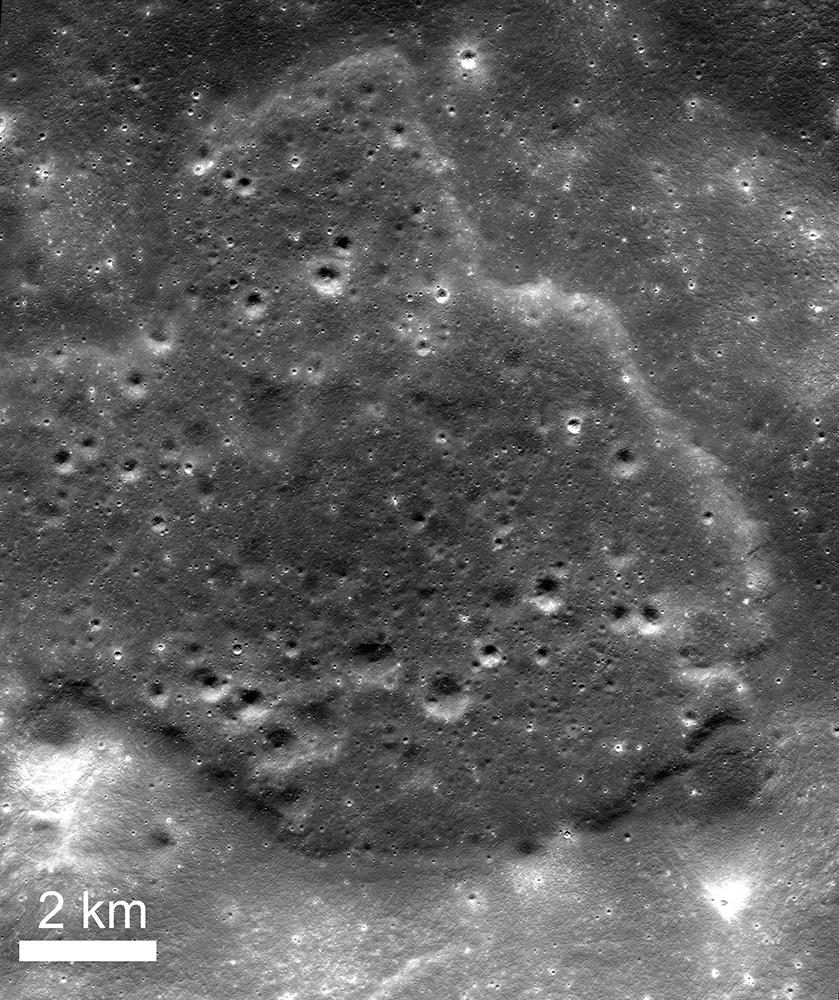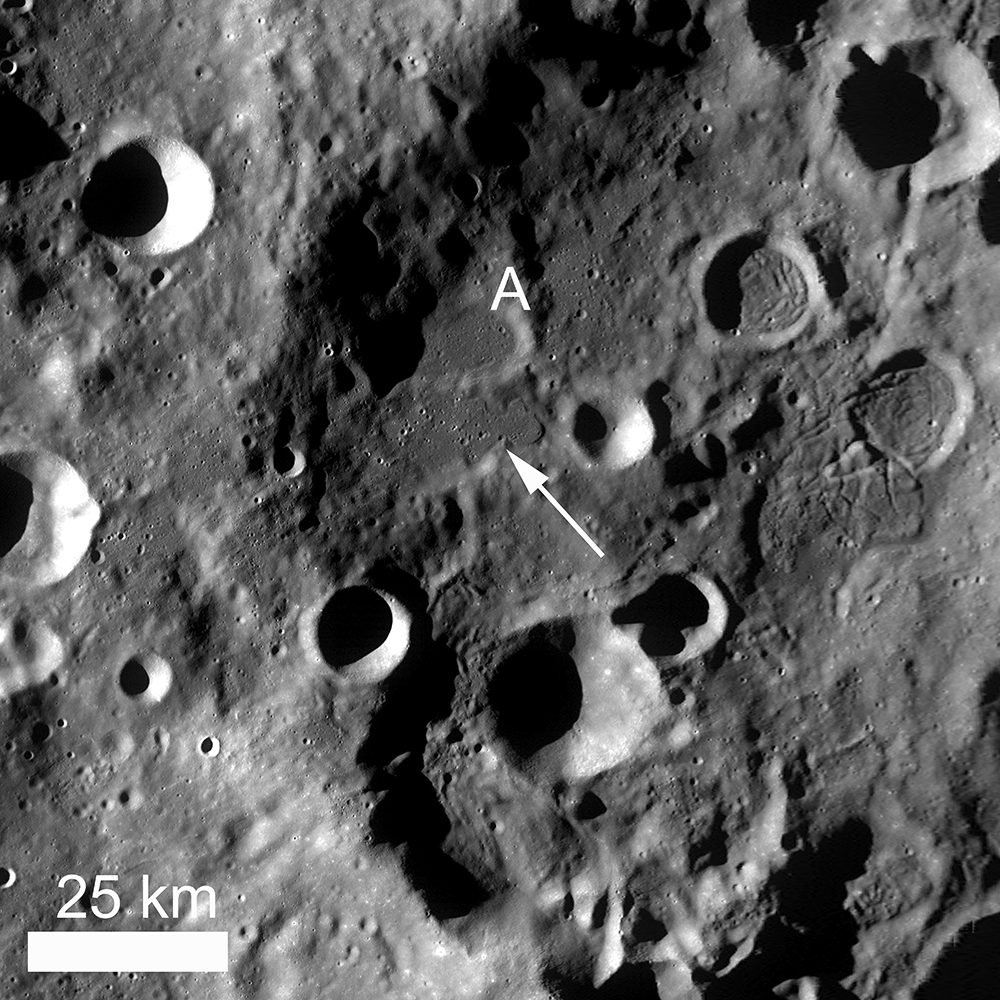
Impact melt is formed during cratering events when there is sufficient energy to melt the target rocks; the larger the cratering event, the more melt is produced. Where does all this energy — enough to melt rocks — originate? Asteroids and comets typically impact the Moon at speeds greater than 12 kilometers per second (27,000 miles per hour)! The enormous amount of kinetic energy is converted to heat that melts the rocks, and typically vaporizes the impactor.
The resulting melt is sprayed up the crater walls (and out of the crater as well) and then cascades back down the walls onto the crater floor, covering it and flowing into low spots. Think of impact melt as instant lava; impact melt produces flows that resemble lava flows found on the Earth because they are made of the same type of material - melted silicate rock (see another spectacular example at Giordano Bruno crater).
The margin of this melt flow occurs on the northwestern floor of a nameless farside crater (105 km diameter) on the northeast margin of the ancient South Pole–Aitken Basin. The flow ranges from 2 to 8 kilometers wide and can be traced for about 18 kilometers from the crater wall. At the lobate end of the flow, it is over 50 meters thick.
Oblique view centered on the flow unit. View is from east-to-west, acquired from an altitude of 51 kilometers, lobate margin of the flow is 4200 meters wide, NAC M1229218987LR [NASA/GSFC/Arizona State University].
Boulders associated with small impact craters on the flow are relatively rare, showing that a thick regolith has formed, indicating an ancient age. consistent with the heavily cratered character of the host crater. However, most of the crater floor is so densely cratered and heavily modified and disrupted that the melt flow appears to be relatively pristine in comparison. So the question remains, from where did this melt originate? Perhaps it is unrelated to its host crater; perhaps the melt came from the Apollo Basin, which lies some 450 kilometers to the northwest. Or, along with some other nearby deposits, from the Orientale basin 750 kilometers to the northeast? The effects of the mighty Orientale were certainly widespread.

Related Featured Images
Published by Jeff Plescia on 28 December 2022